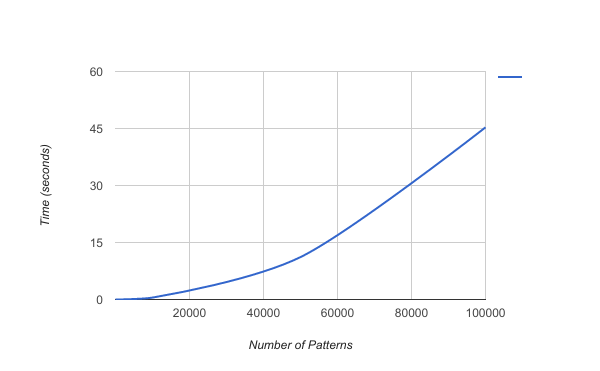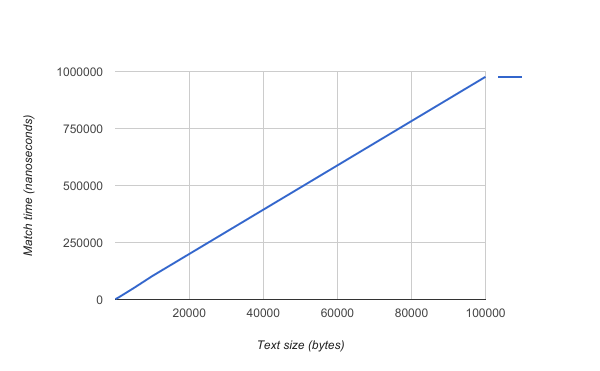Aho-Corasick string search algorithm implemented in Go.
Uses a double array trie for improved access speeds and reduced memory consumption.
Can be found here.
Use a TrieBuilder to create a Trie:
trie := NewTrieBuilder().
AddStrings([]string{"hers", "his", "he", "she"}).
Build()Match something:
matches := trie.MatchString("I have never tasted a hershey bar.")
fmt.Printf("We got %d matches.\n", len(matches))
// => We got 4 matches.Examine matches:
for _, match := range matches {
fmt.Printf("Matched %q at offset %d.\n", match.Match(), match.Pos())
}
// => Matched "he" at offset 22.
// => Matched "hers" at offset 22.
// => Matched "she" at offset 25.
// => Matched "he" at offset 26.For debugging you may output the trie in DOT format:
NewTrieGrapher(trie).DrawFailLinks(true).Graph("example.dot")And convert to image, e.g.:
$ dot -Tpng -o example.png example.dotYou can use ReadStrings or ReadHex to read patterns from a file (one pattern on each line).
patterns, err := ReadStrings("patterns.txt")
if err != nil {
log.Fatal(err)
}
trie := NewTrieBuilder().AddPatterns(patterns).Build()Building a large trie can take some time:
So you can create a trie and save to file and load it instead of recreating it each time:
err := SaveTrie(trie, "my.trie")
if err != nil {
log.Fatal(err)
}And later:
trie, err := LoadTrie("my.trie")
if err != nil {
log.Fatal(err)
}Tested on a Dell XPS (i7-6700HQ @ 2.60GHz and 16 GiB RAM).
BenchmarkBuildNSF/10-8 200000 11871 ns/op
BenchmarkBuildNSF/50-8 20000 66552 ns/op
BenchmarkBuildNSF/100-8 10000 168264 ns/op
BenchmarkBuildNSF/500-8 1000 2118400 ns/op
BenchmarkBuildNSF/1000-8 200 6864025 ns/op
BenchmarkBuildNSF/5000-8 10 126533350 ns/op
BenchmarkBuildNSF/10000-8 2 504624124 ns/op
BenchmarkBuildNSF/50000-8 1 11154774829 ns/op
BenchmarkBuildNSF/100000-8 1 45294850018 ns/op
As you can see, building gets a bit rough above 10,000 patterns.
Using 10,000 patterns.
BenchmarkMatchIbsen/100-8 1000000 1193 ns/op
BenchmarkMatchIbsen/500-8 300000 5279 ns/op
BenchmarkMatchIbsen/1000-8 200000 9704 ns/op
BenchmarkMatchIbsen/5000-8 30000 49823 ns/op
BenchmarkMatchIbsen/10000-8 20000 102436 ns/op
BenchmarkMatchIbsen/50000-8 3000 490882 ns/op
BenchmarkMatchIbsen/100000-8 2000 976724 ns/op
Matching follows the input more linearly and is quite fast.
Haven't tested this properly, but a quick test with 10,000 patterns gave Trie with size 99830 (that is, the length of all its slices combined). This should in theory equal around 0.76MiB. I do not know the internals of golang enough to know how this is in practice.
The memory usage is (obviously) higher when actually doing matching.



